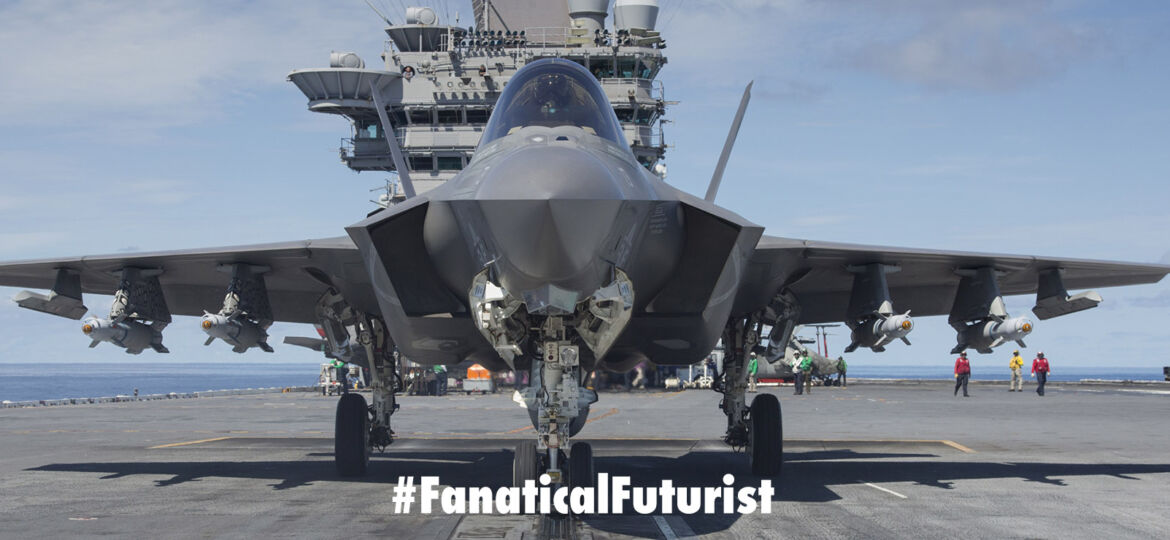
WHY THIS MATTERS IN BRIEF
By combining the power of AI with 3D printing the US military hopes to revolutionise how products are designed and made everywhere.
One thing about aircraft, especially ones that fly from aircraft carriers, that are increasingly being turned into floating factories and flying fortresses, where they’re battered by saltwater and tough deck landings, is that they need lots of spare parts that aren’t always on hand. But instead of flying in new parts, though, future US Navy ships may be able to make new ones to order on demand by 3D printing them, but these parts won’t just be printed by any old 3D printer, they’ll be printed by the US Military’s new smart 3D printers that are monitored by robot arms heavily infused with powerful AI capabilities that do everything from design the parts, fine tune the materials and control the end to end process. And that could be a game changer, not just for the US military, but for the manufacturing industry as a whole.
Picture an intelligent, laser-wielding robot that can analyse the damage to a part and 3D print the needed titanium alloy parts from an onboard supply of metallic dust. This is one glimpse of the future proposed by the Office of Naval Research (ONR), which today announced a two year, $5.8 million contract to create a new generation of “super smart 3D printers.” The printers would not only make parts on order wherever they are needed, but can “observe, learn and make decisions by themselves,” according to Lockheed Martin who are running the project.

Two of the prototypes
The project is a collaborative effort between Lockheed Martin, Oak Ridge National Labs, Carnegie Mellon University, and four other partners, and the team is starting with Ti-6AI-4V, a common titanium alloy used in aerospace. If the project succeeds, it could demonstrate how Artificial Intelligence (AI) could change everything you know about advanced manufacturing.
It’s easy to see how manufacturing new parts on the spot could change the game for the US Navy. But there’s a dirty little secret about 3D printing that limits its use with machines that endure extreme stress, like spacecraft and airplanes, and this is what the new project is setting out to fix, and where AI comes into the equation.
Consider the materials themselves. Aerospace grade metals, including several recipes of titanium alloy, are supplied by foundries and have well known characteristics. This raw metal comes with guaranteed strength, porosity, and thermal tolerance characteristics. Not so with 3D printed metal, which is made layer-by-layer on the spot.
What engineers call the microstructure of the metal, meaning the size, shape, and orientation of the grains, for example, is not guaranteed from a 3D printed metal part, and this is a major issue especially when you want your new parts to be reliable and robust – after all, the part could look identical to a traditionally manufactured one but perform very differently.
“With traditional, subtractive manufacturing you have the same properties in the final part,” says Glynn Adams, a 25-year welding veteran who works for Lockheed in Michaud, LA . “But with additive manufacturing the material and mechanical properties are not as well understood.”
ONR has a plan, though. By outfitting the 3D printing robot arms with commercial sensors, the lab is hoping to create a database that ties 3D printing processes and conditions with the resulting microstructure. The data will create predictive models that will enable 3D printing machines to create parts with foundry consistency, but from anywhere.
“We have to build quality into the part,” Griffith says.
This is where AI comes into play. Machine learning algorithms allow these 3D printers make adjustments on their own to match the material qualities the military is looking for. It’s manufacturing by wire: Simply provide the shape and needed performance properties of the metal, and the 3D printer will take it from there. In other words, the printers will train themselves to make decisions on how to build things.
“When you can trust a robotic system to make a quality part, that opens the door to who can build usable parts and where you build them,” says Zach Loftus, Lockheed Martin Fellow for additive manufacturing.
A fleet of future Navy ships or spacecraft could learn from each other’s experience via a hive mind, the likes of which we’ve already seen elsewhere in the robotics world, by feeding the data from each robot back to a central brain.
“The project with ONR is at the inception of this,” Griffith says. After all, he works within Lockheed’s space systems group, opening up another vista for 3D printed parts. Intelligent 3D printers open up new ways of building things in space, saving money on launch costs and nearly impossible quality control.
“It could enable on-orbit manufacturing,” Griffith says, like the type Jeff Bezos, Amazon’s founder, is envisaging. “Think about the freedom additive manufacturing might enable when you can trust the material properties.”

















[…] little while ago we saw how the US Navy had “given their 3D printed robots a brain” so that they could team up together and manufacture some of the world’s most advanced air […]